
On the Easel
Roger E. Evans
Due to the numerous images, it may take a few moments to download the page for each work. Please be patient.
I begin the portrait by taking reference photos at the customer's site. I then follow up the camera shoot at a later date by painting a study from life and taking more reference photos. When I paint the life study, I'm more interested in getting the color of the skin tones correct than the likeness of the subject. Trying to be sensitive to the time constraints of the subject, I keep the sitting time for the study less than three hours.
The following image is of the study for Roger's portrait and two of the reference photographs.
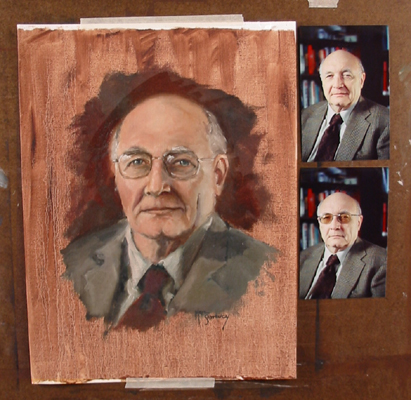
Once the study is completed, I proceed to the full canvas.
What in the world is this? Right? I thought that I would show you the first step in the painting process - the toned canvas. I generally use Belgium linen canvases that are at least twice primed - usually three times. The priming prevents the canvas from drawing the oils out of the paints. If oil is drawn out of the paints, they become less manageable and may prematurely dry.
I tone my canvas to a medium value with burnt umber diluted with turpentine. It is then wiped down with a rag.
The next step is sketching in the drawing. I use burnt umber to sketch in two drawings of the sitter. The first drawing is done in a diluted burnt umber. This mixture allows me to roughly sketch in the drawing. The second mixture contains just enough turpentine to allow for the paint to flow freely. This sketch is much darker and more precise then the first drawing.
At this point, I've completed two drawings of Roger.
You may notice additional lines in the shoulders and arms. I often sketch in some anatomical reference points to get a feel for whether the proportions seem correct.
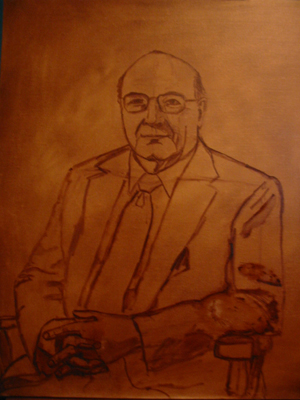
I've also sketched in some of the contour lines of the shadows and have lightly blocked in some of the shadows.
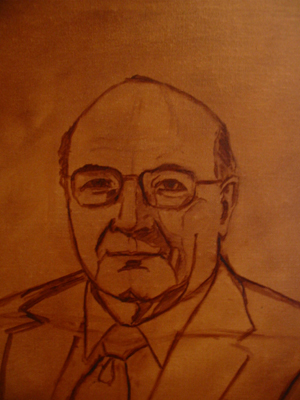
Once the sketch is finished, I start blocking in the darkest areas followed by the middle tones. In the next image, the middle tones have been added to the head. The darkest areas have already been blocked in the head, coat, and hands. You may notice that two of the reference photos and life study are beside the portrait. As I'm working on the middle tones, I use the photos as my primary reference for the portrait and the life study as my color reference.
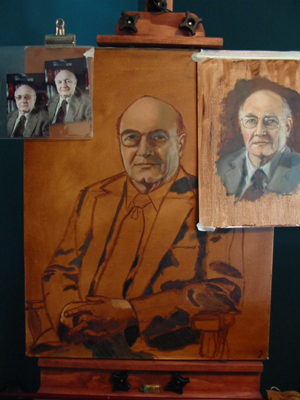
Once the darks have been blocked in and the middle tones have been added to the face, I start working on the middle tones in the shirt, jacket, and hands.
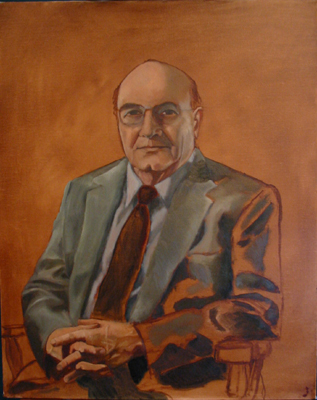
With the middle tones completed, I begin blocking in the background.
(I apologize for the quality of the following photograph. It was taken under less than suitable lighting, but it accurately illustrates the next step regardless of its quality)
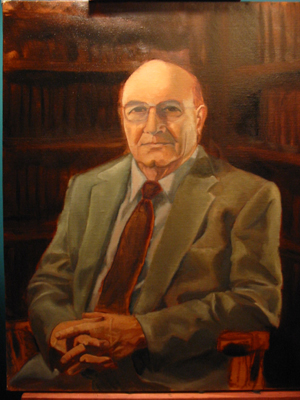
With the background blocked in, I restate some of the darks and paint the eyes, nose, and mouth. I then place the lights into the head, hands, and jacket. This concludes the first approximation of the values and colors for the portrait.
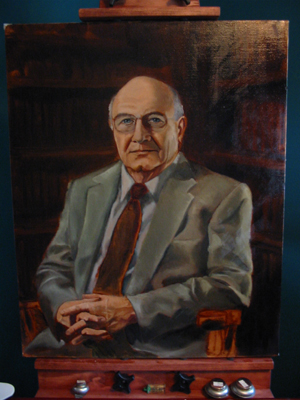
With the addition of the lights completed. I start the painting process all over again. I restate the darks, then the middle tones, and then the lights. Then I go between the darkest darks and the highlights, refining contours and details. Once I've completed these steps and I think that the painting is through, I place it before my two best critiques: my wife and my father. My father suggested some subtle changes to the shading, which I've included. The painting was then shown to Mr. Evans for his approval.
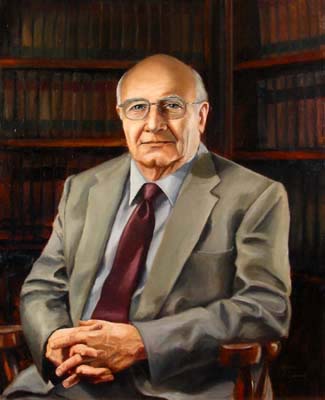
Roger E. Evans
Oil on Linen
30" X 24"
© 2004, 2003, 2002 Marc J. Surrency. Artist scans, images, and web design are protected by copyright. Physical or electronic reproduction in whole or part is unlawful without written permission of the artist.